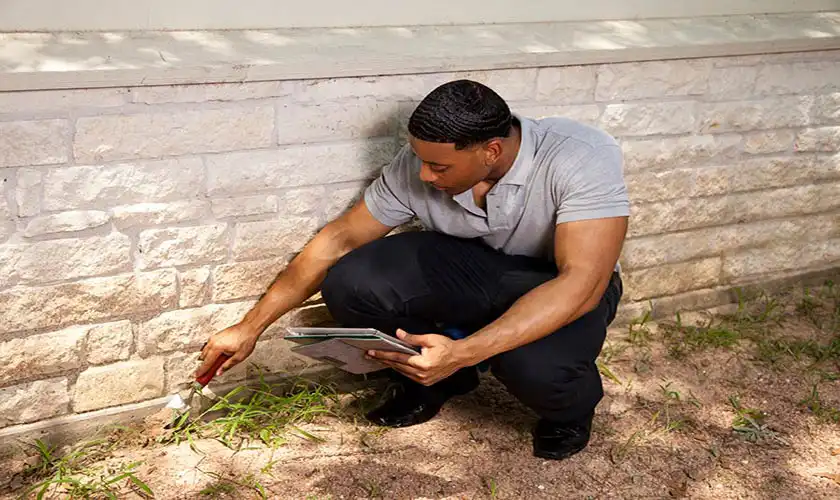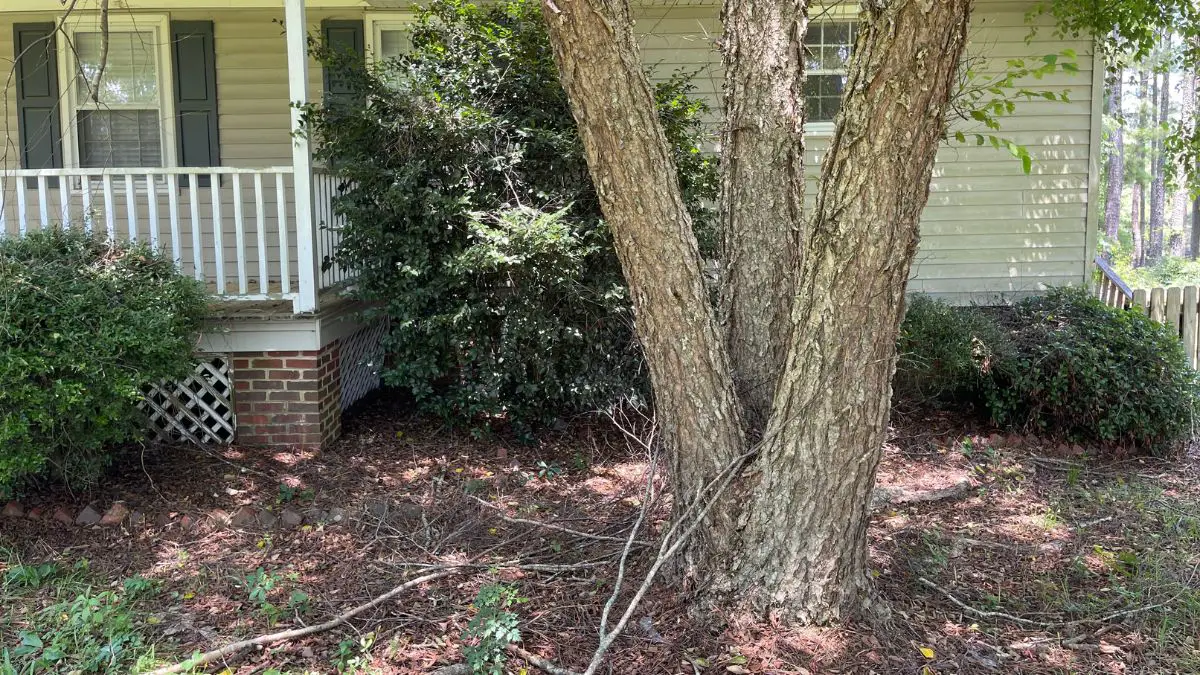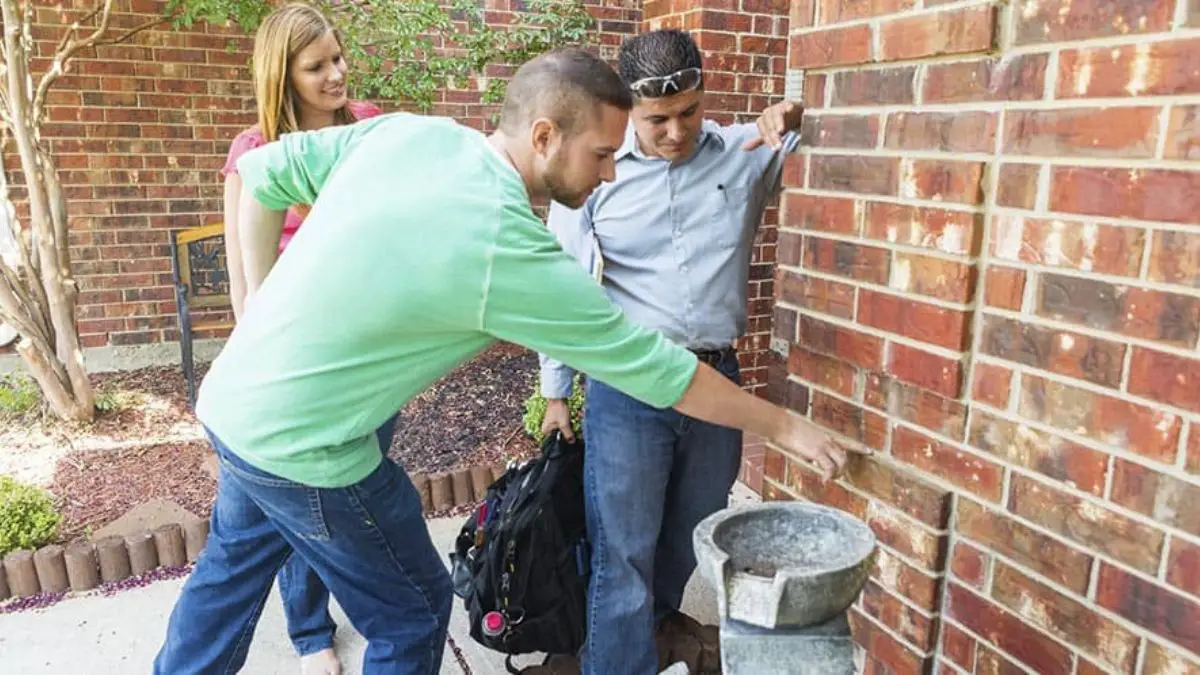Did you know that beneath the surface, tree root foundation damage quietly lurks as a formidable but often overlooked danger? These seemingly innocent roots have the power to jeopardize the stability of our homes, making it vital to understand the potential risks they pose.
As tree roots gradually infiltrate the foundation, they can cause serious structural problems that compromise the safety and integrity of our beloved abodes.
Trees, while beneficial to the environment, can cause significant damage to structures due to root expansion. Tree root foundation damage varies in severity, from cosmetic concerns to structural issues.
Let’s uncover the truth about this hidden threat and learn how to protect our homes from the perils of tree root damage.
Get FREE quotes from local foundation repair contractors in your area today. Whether you need a pier replaced, basement waterproofing, or a full foundation replacement - We Can Help! All Contractors are screened, licensed, and insured.
Exploring Tree Root Foundation Damage
Trees are an important part of our natural environment, providing numerous benefits such as cleaner air and water, shade, and habitat for wildlife.
However, trees can also cause significant damage to structures, including homes, buildings, and infrastructure. One of the most common problems caused by strong trees is tree root foundation damage.
What You Need To Know?
As common trees grow, their roots expand and extend beneath the ground, seeking nourishment and stability. Unfortunately, this natural process can have unintended consequences when roots infiltrate the foundations of structures.
The gradual expansion of tree roots can exert relentless pressure on the foundation of our homes and buildings, resulting in worrisome cracks, unsettling shifts, and overall structural instability, ultimately leading to the grave concern known as tree root foundation damage.
Definition of Tree Root Foundation Damage
Tree root foundation damage refers to the physical impact that tree roots have on building foundations.
The extent of tree root foundation damage can range from minor cosmetic issues, such as superficial cracks, to more severe complications that compromise the structural integrity of the building.
Factors such as the soil type, tree species, the proximity of trees to the foundation, and the trees’ age and size can influence the damage’s severity.
Important
Preventive measures play a vital role in minimizing tree root foundation damage. Proper tree selection, appropriate planting distances from structures, and the installation of root barriers are effective strategies to prevent root intrusion and mitigate potential risks.
Regular inspections, maintenance of the foundation, and timely repairs are also essential in preserving the structure’s integrity.
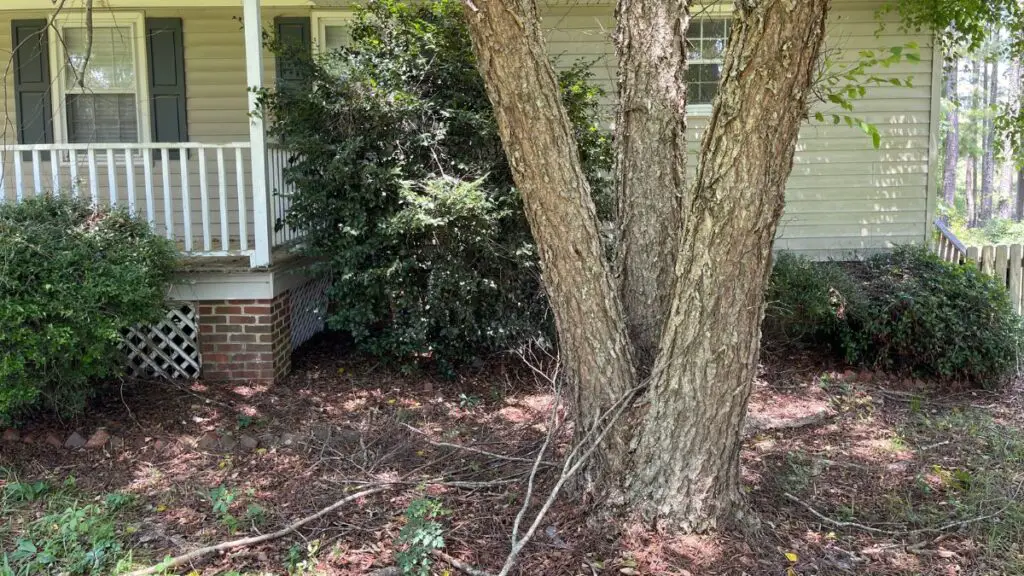
Impact Of Tree Root Foundation Damage: Understanding The Importance
Homeowners and developers often overlook the impact that trees can have on structures. However, ignoring these issues can lead to costly repairs or incomplete reconstruction if not addressed early on.
5 Factors To Consider
- Avoid Costly Repairs: Property owners can proactively mitigate potential damage and avoid expensive repairs or reconstruction by recognizing how tree roots can affect foundations.
- Preserve Structural Integrity: Awareness of the risks associated with trees near buildings helps maintain the stability and structural integrity of the property. Early detection and appropriate action can prevent issues such as cracks and shifts in the foundation.
- Inform Urban Planning and Design: Urban planners and architects can strategically plan tree placement, considering tree species, building proximity, and root systems.
- Preserve Natural Beauty: Understanding the impact of trees on foundations enables thoughtful integration of trees into the built environment, preserving their aesthetic appeal and natural beauty.
- Enhance Environmental Sustainability: Trees provide environmental benefits like improved air quality, reduced urban heat island effect, and increased biodiversity.
Understanding how trees affect foundations is also crucial for urban planners and architects when designing new developments or retrofitting existing ones.
Trees must be planted strategically to minimize their impact on buildings while preserving their many benefits.
How Do Tree Roots Affect Foundations?
Trees can significantly impact the stability and integrity of building foundations. Understanding how tree roots interact with foundations is crucial for homeowners and property owners.
5 Key Factors to Consider
- Expansion and Contraction: As tree roots grow, they can exert pressure on the surrounding soil, leading to their expansion and contraction. This movement can cause shifts in the foundation, resulting in cracks and structural damage.
- Moisture Absorption: Tree roots naturally seek moisture and can extract water from the soil around the foundations. This water absorption can cause soil shrinkage, leading to foundation settlement and unevenness.
- Soil Desiccation: Tree roots can desiccate the soil beneath and around foundations in their quest for water. When the soil dries out, it loses its supportive properties, compromising the stability of the foundation.
- Intrusion into Foundation Cracks: As tree roots grow, they can find their way into existing foundation cracks, exacerbating the damage and weakening the structure.
- Proximity to Foundation: The proximity of trees to the foundation plays a crucial role. Large trees with extensive root systems located too close to the foundation pose a higher risk of damage than smaller trees planted at a safe distance.
Types Of Trees That Commonly Cause Foundation Damage
While most trees have shallow roots that do not extend very far below the surface, some tree species are known to be more invasive and can cause significant damage to nearby foundations.
Here are some types of trees that are known to cause foundation damage:
- Willow Trees: Willow trees, particularly weeping willows, have invasive root systems extending far beyond the tree’s canopy. Their roots aggressively seek water sources, including pipes and foundation cracks, which can damage the foundation.
- Poplar Trees: Poplar trees, including cottonwood and aspen trees, have expansive root systems that can spread wide and deep. These trees are known to seek out water, and their roots can penetrate foundations and drainage systems, causing damage over time.
- Silver Maple Trees: Silver maples have invasive root systems that can infiltrate foundations and pipes. They thrive in moist areas, making them troublesome in regions with high water tables or excessive moisture.
- American Elm Trees: while majestic and beautiful, American elms can have invasive root systems. These trees have been known to cause damage to foundations and underground utilities, especially in urban areas with limited space.
- Black Walnut Trees: Black walnut trees produce a chemical called juglone, which can be toxic to many other plants and can inhibit their growth. This chemical is released through the tree’s roots and fallen leaves.
The Mechanics Behind Tree Root Foundation Damage
As trees grow, their roots spread further into the soil for nutrients and water. Tree roots can come into contact with foundations in their quest for these resources.
Over time, as the roots grow thicker and stronger, they can exert tremendous pressure on foundations, causing them to crack or shift out of place.
What You Should Know?
Tree root intrusion can also lead to changes in soil moisture content which affects soil stability around the foundation. This results in foundation settling or heaving leading to structural damage.
Factors That Influence The Extent of Tree Root Foundation Damage
Several factors determine how much damage tree roots will cause to a foundation over time.
6 Crucial Factors Shaping Tree Root Foundation Damage
- Tree Size: A tree’s size determines its root system’s size. Larger trees tend to have more extensive root systems capable of exerting greater pressure on foundations, increasing the potential for damage.
- Soil Type: The type of soil plays a crucial role in the extent of damage caused by tree roots. Soils with high clay content are particularly vulnerable to expansion and contraction as tree roots absorb and release moisture, leading to potential soil movement and foundation issues.
- Proximity to Foundations: The distance between trees and foundations is critical. Trees planted too close to foundations have a higher likelihood of causing damage, as their roots have a greater chance of infiltrating the foundation structure.
- Foundation Depth: The depth at which the foundational footing sits can affect the impact of tree roots. Deeper footings are generally more resistant to root intrusion and subsequent damage.
- Foundation Type: Different types of foundations may have varying susceptibilities to tree root damage. For example, shallow or slab foundations are more vulnerable than deeper, reinforced concrete foundations.
- Age and Condition: The age and overall condition of the tree and the foundation are essential considerations. Older, mature trees with well-established root systems are more likely to cause damage, especially if the foundation has pre-existing weaknesses or deterioration.

Identifying Tree Root Foundation Damage
Identifying foundation damage caused by tree roots is crucial for early detection and taking necessary actions to mitigate the issue. Here are some signs and symptoms to look out for:
Signs And Symptoms Of Foundation Damage Caused By Tree Roots
As trees grow, their roots can extend far beyond the tree canopy, and sometimes these roots can cause serious damage to the foundation of a home or building.
Identifying the signs and symptoms of foundation damage caused by tree roots is crucial to preventing further damage and avoiding costly repairs.
- Cracks in Walls and Floors: One of the most common signs of foundation damage is the appearance of cracks in interior or exterior walls and in the flooring. These cracks may be vertical, diagonal, or stair-step patterns.
- Uneven or Sloping Floors: If you notice that your floors are no longer level, with noticeable slopes or unevenness, it could indicate foundation damage. This can occur when tree roots disrupt the stability of the foundation, causing it to shift or sink.
- Doors and Windows Sticking or Misaligned: As the foundation undergoes movement or displacement due to tree root damage, doors, and windows may become difficult to open or close properly. They may stick, jam, or show uneven gaps around the frames.
- Separation of Molding or Trim: When foundation damage occurs, you may observe gaps or separations between molding, trim, or caulking around doors, windows, and baseboards. This can be a result of the shifting or settling of the foundation.
- Plumbing Issues: Tree roots seeking moisture can infiltrate and damage underground plumbing lines. If you experience recurring plumbing problems, such as clogs, backups, or leaks, it could indicate tree root interference with the plumbing system.
- Visible Root Intrusion: In some cases, you may notice visible signs of tree root intrusion near the foundation. This can include protruding or exposed tree roots emerging near the structure’s base or visible signs of root damage to the surrounding soil.
- Soil Changes: Pay attention to changes in the soil around the foundation. Swelling or shrinking of the soil due to moisture changes caused by tree roots can lead to uneven settling, which may result in foundation damage.
Common Areas Where Tree Root Foundation Damage Is Likely To Occur
Tree root foundation damage is more likely to occur near large trees near a home or building. Trees with aggressive root systems, like willow trees, silver maples, and oak trees, are particularly likely to cause problems.
Trees planted on slopes where water runs downhill toward a building can be problematic since they tend to have more extensive root systems searching for water. The area of the foundation most likely to be affected is where the roots come into contact with it.
Tree root foundation damage can occur in various areas around a property. Here are some common areas where tree root damage is likely to occur:
7 Areas Prone To Tree Root Foundation Damage
- Near Building Foundations: Tree roots often grow outward from the base of trees, seeking moisture and nutrients. If trees are planted too close to a building’s foundation, their roots can infiltrate it, causing damage over time.
- Underneath Concrete Structures: Concrete structures such as driveways, sidewalks, and patios can be susceptible to tree root damage. As roots grow and expand, they can exert pressure on the concrete, leading to cracking, lifting, or displacement.
- Sewer and Drain Lines: Tree roots are attracted to water sources, including sewer and drain lines. Over time, root intrusion can occur, causing blockages, leaks, or breakages in the plumbing system.
- Retaining Walls: Retaining walls provide structural support to hold back soil or provide elevation changes. If trees with invasive root systems are planted near retaining walls, their roots can penetrate the wall structure, compromising its stability.
- Septic Systems: Like sewer lines, tree roots can infiltrate septic systems, leading to blockages, pipe damage, or malfunctions. This can result in sewage backup or septic system failure.
- Water Lines: Tree roots have a natural inclination to seek out water sources, including underground water supply lines. Invasive roots can cause damage to water lines, resulting in leaks or water supply disruptions.
- Drainage Systems: Tree roots can affect underground drainage systems, such as French drains or stormwater pipes. Root intrusion can obstruct proper drainage, leading to water accumulation, soil erosion, or damage to the drainage infrastructure.
Importance Of Early Detection And Intervention
Early detection and intervention are essential to prevent further damage from tree root invasion. The longer you wait before addressing the problem, the more extensive and expensive repairs will become.
If you suspect your home’s foundation has been damaged by tree roots, it’s important not to ignore it! Contacting a foundation specialist or arborist to come and assess the situation is essential.
These professionals will be able to determine the extent of the damage and recommend appropriate action. Typically, tree roots that are causing foundation damage need to be removed, but this should only be done by a trained professional to avoid causing further damage.
Preventing Tree Root Foundation Damage
Planting trees near homes and buildings requires careful consideration to minimize the risk of tree root foundation damage.
Best Practices For Planting Trees Near Homes And Buildings
When planting trees near homes and buildings, it is important to consider the tree type, its root structure, and the distance between the beautiful tree and the foundation.
Some types of trees have shallow root systems that are more likely to cause foundation damage than others. Roots may extend far beyond the canopy of a tree, so it is important to plant trees far enough away from structures to prevent damage.
- Select Appropriate Tree Species: Choose tree species with non-invasive root systems that are less likely to cause damage to foundations. Research and consult with local arborists or tree experts to determine which trees suit your area and property.
- Maintain Proper Distance: Plant trees safely from foundations, considering the tree’s mature size and the potential spread of its root system. The recommended minimum distance can vary depending on the tree species, but a general guideline is to maintain a distance of at least 10 to 15 feet from the foundation.
- Consider Tree Size at Maturity: Be aware of the expected mature size of the tree and ensure it has adequate space to grow without interfering with nearby structures. Avoid planting trees with large spreading canopies too close to buildings.
- Use Root Barriers: Installing root barriers can help prevent tree roots from infiltrating sensitive areas. These barriers are typically made of impermeable materials like high-density polyethylene (HDPE) and are placed between the tree and the foundation to redirect root growth away from the structure.
- Implement Proper Watering Practices: Adequate and consistent watering is crucial for young trees to establish a healthy root system. However, avoid overwatering as it can encourage shallow root growth near the surface, increasing the risk of foundation damage. Water trees deeply but infrequently, allowing the soil surface to dry out between watering sessions.
- Regular Maintenance and Pruning: Regularly inspect trees for signs of root issues or overgrowth. Conduct seasonal pruning to maintain a healthy tree structure and prevent excessive root development in undesirable directions.
- Consult with Professionals: When planning to plant trees near homes or buildings, consider seeking advice from professional arborists or landscape architects who can guide suitable tree species, placement, and maintenance practices specific to your property.
Preventing and Mitigating Tree Root Impact On Foundations
Several techniques can be used to prevent or mitigate the impact of tree roots on foundations.
How to prevent root penetration near foundations?
One effective method is to install a root barrier between the tree and the foundation. The barrier should extend at least three feet deep into the soil and protrude above ground level by a few inches.
The barrier can be made from materials such as plastic or metal sheeting that will resist penetration by roots. Another technique is using soil cells or other soil retention systems when planting trees near foundations.
These systems provide space for roots to grow without directly contacting building foundations. They also help stabilize soil moisture levels around roots, reducing water uptake pressure on foundations.
Maintenance Tips for Preserving Healthy Trees While Also Protecting Foundations
Preserving healthy trees and protecting shallower foundations can go hand in hand with proper maintenance practices. Here are some tips to help you achieve both:
- Regular Inspections: Check for signs of disease, pests, and structural issues in trees. Early detection and treatment can prevent tree decline and falling branches that may damage foundations.
- Proper Pruning: Remove dead, diseased, or crossing branches to enhance air circulation and prevent hazards. Avoid excessive pruning that can stress the tree and increase root growth, posing a risk to foundations.
- Mulching: Apply organic mulch around the base of trees, extending it beyond the canopy’s outer edge. Mulch retains moisture, regulates soil temperature, suppresses weeds, and protects roots from mechanical damage.
- Watering Wisely: Provide adequate water to trees, especially during dry periods. Deep watering promotes deep root growth, improving stability and reducing the likelihood of surface roots affecting foundations. Avoid overwatering, which can result in shallow root systems and instability.
- Soil Conditions: Ensure well-drained soil to prevent waterlogging and root suffocation. Avoid compacting soil or adding excessive fill material near the tree’s root zone, as it restricts oxygen availability and hinders root growth.
- Construction Protection: Take precautions to safeguard tree roots during nearby construction or landscaping projects. Install barriers or fencing around the drip line to prevent soil compaction and root damage. Minimize soil disturbance as much as possible.
- Seek Professional Advice: Consult certified arborists or tree care professionals for expert guidance, tree risk assessments, and tailored maintenance practices when dealing with complex tree-related issues.
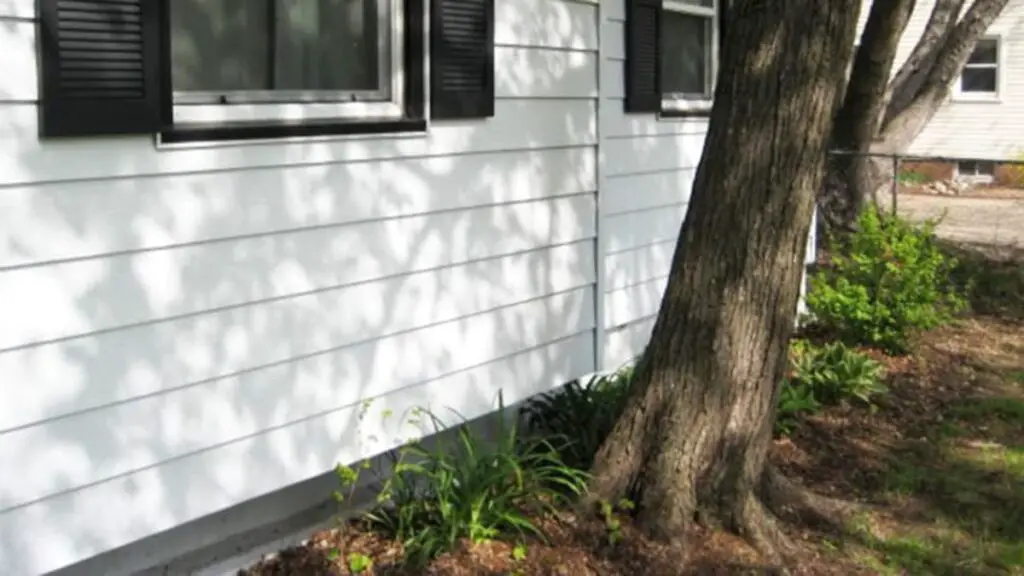
Repairing Tree Root Foundation Damage
When it comes to repairing tree root foundation damage, several types of repairs may be required depending on the extent and type of damage.
Repairs For Different Levels Of Tree Root Foundation Damage
- Minor Damage:
Foundation Crack Sealing: Small cracks in the foundation can be repaired by sealing them with epoxy or polyurethane injection. This helps prevent water infiltration and further deterioration. - Moderate Damage:
Foundation Underpinning: In cases where the foundation has experienced moderate movement or settling due to tree root damage, underpinning may be necessary. This involves strengthening the foundation by adding additional support, such as helical piers or push piers, to stabilize and lift the affected areas. - Severe Damage:
Foundation Replacement: In extreme cases where the foundation has sustained significant damage and is beyond repair, complete foundation replacement may be required. This involves removing the existing foundation and constructing a new one. - Tree Root Barrier Installation:
Installing root barriers can help prevent further tree root intrusion into the foundation. Root barriers are constructed using high-density polyethylene (HDPE) and installed between the tree and the foundation to redirect root growth away from the structure. - Plumbing and Drainage System Repairs:
If tree roots have infiltrated plumbing or drainage lines, repairs or replacement may be necessary to restore proper functionality and prevent future issues.
It’s important to consult a professional to determine the best course of action for your situation, as each case requires a customized approach.
Costs Associated With Repairing Foundation Damage Caused By Trees
The cost associated with repairing foundation damage caused by trees can vary greatly depending on several factors, including the extent and severity of the damage, as well as the method used to repair it.
On average, homeowners can expect to pay anywhere from $4,000 to $10,000 or more for repairs related to tree root damage.
Note:
It’s important to note that these costs can quickly add up if left unaddressed for too long. Early detection and intervention can help save money in the long run by preventing further damage from occurring.
Importance Of Hiring A Professional To Repair Foundation Damage
While it may be tempting to try and tackle foundation repairs independently, hiring a professional for this type of work is highly recommended.
Not only do they have specialized knowledge and expertise in dealing with tree root damage, but they also have access to the specialized equipment needed to diagnose and repair the damage properly.
Hire a professional for peace of mind. When it comes to your home’s foundation, the stakes are high. Don’t take chances – opt for professional assistance to ensure the job is done correctly and safely.
Tree Root Foundation Damage FAQs
What do you do if tree roots are damaging the foundation?
If tree roots are damaging the foundation, consult with a certified arborist and a foundation repair specialist for professional advice.
Will removing a tree damage the foundation?
Removing a tree itself is unlikely to cause foundation damage, but if the tree’s roots have already caused significant damage, the excavation involved in the removal process near the foundation may potentially disturb the soil and impact the foundation.
Can a tree recover from root damage?
Yes, trees have the potential to recover from root damage depending on the severity and extent of the damage. Trees can initiate new root growth and regain their health and stability over time with proper care, such as adequate watering, mulching, and pruning.
Can tree root damage be repaired without removing the tree?
Minor to moderate tree root damage can often be repaired without removing the tree using foundation crack sealing, underpinning, or root barrier installation.
Final Thoughts On Tree Root Foundation Damage
Tree root foundation damage can be a significant problem for homeowners and building owners. Foundation repair is often an expensive and time-consuming process that can lead to significant disruption in daily life.
Taking proactive measures to prevent or mitigate the impact of tree roots on shallow foundations can help avoid these issues entirely.
By following simple techniques like planting trees far away from buildings or using physical barriers to redirect root growth, you can ensure that your home or building remains safe from foundation damage caused by trees.
So don’t be afraid to plant that beautiful oak in your yard – take the necessary precautions first!


